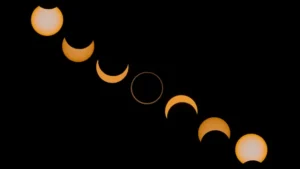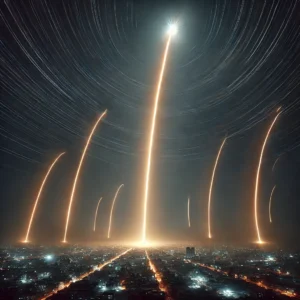October 2024: Spectacular Celestial Events and Cosmic Wonders
The skies will offer plenty of reasons to look up to from a mesmerizing “Ring of Fire” solar eclipse to the close approach of Comet C/2023 A3.

Pixabay
October 2024 is set to be an exciting month for astronomy enthusiasts and anyone captivated by the night sky. With 10 spectacular celestial events lined up, this month promises to be filled with awe-inspiring cosmic displays.
The skies will offer plenty of reasons to look up to from a mesmerizing “Ring of Fire” solar eclipse to the close approach of Comet C/2023 A3.
Among the highlights are the Draconid, Southern Taurid, and Orionid meteor showers, a brilliant supermoon, and close alignments between the moon and planets like Jupiter and Saturn. Whether you’re a seasoned astronomer or just love gazing at the stars, October offers something for everyone.
Here’s a rundown of the key celestial events to mark on your calendar, starting with the solar eclipse on October 2.
October 2, 2024 — Annular Solar Eclipse (“Ring of Fire”)
The month begins with the captivating annular solar eclipse, or “Ring of Fire.” During this event, the moon passes between Earth and the sun but is too distant to completely cover the sun, creating a glowing ring around the moon. This stunning sight will be visible from parts of North and South America, including Argentina and Chile, starting at 9:12 IST.
October 8-9, 2024 — Draconid Meteor Shower
On the night of October 8, the Draconid meteor shower will peak. While not as intense as other showers, it can still provide a charming spectacle, with meteors seeming to originate from the Draco constellation. The best time to watch is shortly after nightfall.
October 10, 2024 — Southern Taurid Meteor Shower
The Southern Taurids, known for their occasional bright fireballs, will light up the sky on October 10. Originating from the constellation Taurus, this meteor shower offers the best views around midnight when Taurus is high above.
October 17, 2024 — Full Hunter’s Moon
On October 17, the Full Hunter’s Moon will rise. This year, it will also be a supermoon, occurring a day after the moon reaches its closest point to Earth, known as perigee. Expect the moon to shine brightly as it reflects sunlight from its position directly opposite the Earth.
October 20-21, 2024 — Orionid Meteor Shower
The Orionid meteor shower, originating from debris left by Halley’s Comet, peaks on the night of October 20-21. Around 20 meteors per hour can be seen in clear skies, with the best viewing in the pre-dawn hours. The meteors will appear to radiate from the Orion constellation, easily spotted by its famous belt of three stars.
October 23, 2024 — Moon-Jupiter Conjunction
On October 23, the moon will have a close encounter with Jupiter, forming a striking conjunction in the night sky. This pairing will be visible after sunset, and you can catch a better view with binoculars or a telescope.
October 27, 2024 — Asteroid 1036 Ganymed
Asteroid 1036 Ganymed, one of the largest near-Earth asteroids, will make its closest approach to Earth on October 27. While not a threat, this 37.7-kilometer-wide asteroid will be an exciting object to observe.
October 29, 2024 — Moon-Saturn Conjunction
After its meeting with Jupiter, the moon will align with Saturn on October 29. Saturn’s rings will be a highlight for those with telescopes, and the conjunction will be visible just after sunset.
October 31, 2024 — Comet C/2023 A3 Perigee
The month ends with the close approach of Comet C/2023 A3, a rare spectacle as it reaches its closest point to Earth on October 31. Observers with telescopes might be treated to a view of the comet’s glowing tail lighting up the night sky.
Prepare for an October filled with celestial wonders—there’s something magical to see almost every night!









